Recognizing & Treating Skin Cancer in Early Stages
According to research from the Skin Cancer Foundation, 1 in 5 people in the U.S. will have some form of skin cancer before the age of 70. Additionally, their research shows that having five or more sunburns in your lifetime doubles your risk for skin cancer. While these statistics may seem bleak, another important statistic from the Skin Cancer Foundation gives us some hope – early detection and treatment of skin cancer leads to a five-year survival rate of 99%. It may sound scary to hear the statistics on how common skin cancer is, but with regular self-skin exams and annual professional screenings, early detection and effective treatment are possible. If you’re at risk for skin cancer, knowing how to identify this condition and seeking treatment right away can literally save your life. In this blog, we will review the top five skin cancer symptoms, and what you should do if you notice something concerning.
What Does Skin Cancer Look Like?
Melanoma & Other Types of Skin Cancer
There are many types of skin cancer, including squamous and basal cell carcinomas and melanoma. Squamous and basal cell carcinomas are relatively common, but they advance slowly and are unlikely to be fatal with proper treatment. These two types of skin cancer may present in a variety of ways. Any change in the color, texture, or development of new skin cells can be indicative of skin cancer, so make sure to note these during regular self-exams and talk to your dermatologist about these changes during annual professional skin exams.
Melanoma is the most aggressive and deadly form of skin cancer. It is a malignant form of skin cancer that often metastasizes (spreads to surrounding tissues) and advances very quickly. For this reason, identifying melanoma in the early stages is essential.
While a dermatologist may identify melanoma during a routine visit, it is important to be vigilant between appointments to spot any skin changes that could indicate potential cancer. This means regularly evaluating your moles for changes, and if you notice any skin cancer symptoms, see your dermatologist. When it comes to melanoma, remembering your ABCDEFs is the key to recognizing potential skin cancer. Keep reading to learn more about the ABCDEFs of skin cancer.
The ABCDEFs of Skin Cancer
 A – Asymmetrical Moles
A – Asymmetrical Moles
The “A” in our ABCDEFs stands for asymmetrical moles and spots or any areas that do not look the same on both sides. Looking at your mole or irregular spot, take the following into consideration – If you draw an imaginary line through the center of a mole, do both sides look the same? If not, the mole is asymmetrical, and it could be cancerous. If you notice an asymmetrical mole during your regular skin self-exams, you should contact your dermatologist for an appointment right away. Asymmetrical moles have a higher likelihood of being malignant, so they need to be evaluated by a dermatologist, who may perform a biopsy to determine if the mole is cancerous.
B – Irregular Border Moles
Non-cancerous cells develop in regular and expected ways, but melanoma cells develop in irregular ways that create unexpected results. While non-cancerous moles have smooth borders, the unstructured development of cancer cells within malignant skin growths can lead to moles with irregular borders. Look for moles that have scalloped edges, notches around the edges, and other irregularities on the outside border that could indicate a melanoma in the early stages of development. This is especially serious if you notice the borders are changing or growing rapidly.
C – Atypical Mole Colors
Those who naturally have moles, freckles, and age spots are actually at greater risk for melanoma, which often develops within these darker spots on the skin. If you already have moles, you’ll notice that these areas are usually similar in color, so any moles that deviate from this may be a concern. When a new mole develops with a different coloring or an existing mole begins to change colors, this could be an issue. Additionally, moles are typically a single color throughout. However, malignant growths usually have multiple colors or shades, including brown and black. In some cases, melanomas may take on atypical mole colors, including blue and red.
D – Mole Size or Diameter
In general, moles that are larger in size are more likely to be melanoma than smaller moles, so a larger mole should be evaluated by a dermatologist. One way your dermatologist will evaluate your moles during a screening is to consider their size. Benign moles tend to be smaller than cancerous ones. Any mole that is larger in diameter than a pencil eraser should be considered a potential malignancy. Keep in mind, however, that some melanomas are smaller in size, especially early in their development.
E – Evolving Moles
Changes in the way the skin looks or feels are always concerning and should be discussed with your dermatologist. Most benign moles look the same year after year. If a new mole or freckle is changing very quickly, it is much more likely to be melanoma. Be alert to moles that change in shape, color, or size and those that bleed or itch, so you can report them to your dermatologist.
 F – Funny Looking
F – Funny Looking
If you step back and look at your skin, and see one spot that just looks funny or doesn’t look like your other spots, it needs to be looked at by a Board-Certified Dermatologist.
Preventing Skin Cancer
Skin cancer has a low mortality rate, but it’s essential to catch any potential melanomas, basal cell carcinomas, or squamous cell carcinomas early. We recommend everyone monitor their moles routinely for change. If you have a history of sunburns, indoor tanning, red hair or fair skin, or many atypical appearing moles, you may want to consider a skin cancer screening from a board-certified dermatologist. Patients with a history of skin cancer or on certain immunosuppressive medications should be seen annually, and in some cases more often. And, don’t forget to use the ABCDEFs discussed above to regularly perform self-examinations between dermatologist appointments. Performing a skin cancer self-exam is easy. Simply stand in front of a mirror with good lighting to clearly view your body. You should use a hand mirror to view your back and other hard to see areas. Start at the top of your body and work your way down noting any moles, freckles, or irregularities on the skin. Don’t forget to check areas like the scalp, skin around the fingernails and toenails, and the palms of hands and soles of feet.
In addition to staying on top of your self-exams and annual dermatology visits, you should also take steps to prevent skin cancer. Sun exposure is, by far, the most common cause of skin cancer. You should protect your skin from sun damage by using sunscreen with an SPF of at least 30 every day, wear protective clothing, and avoiding extended exposure during peak hours between 10 am and 4 pm.
Related: What Happens if you Let Skin Cancer go Untreated?
Ready for an Annual Skin Cancer Screening?
We have multiple locations throughout the country, so fill out our simple online form to get in touch with us. One of our local team members will reach out to you shortly to answer your questions or schedule an appointment for you to visit us soon for an annual skin exam.
Find a location near me
or

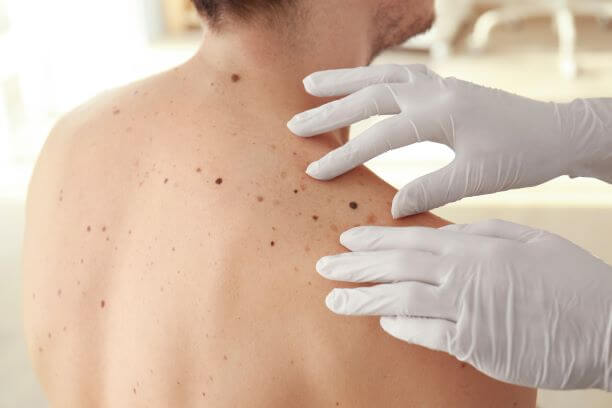
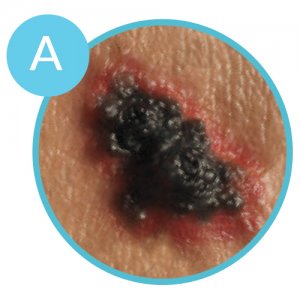 A – Asymmetrical Moles
A – Asymmetrical Moles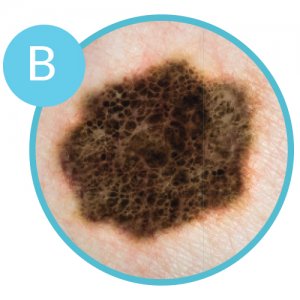
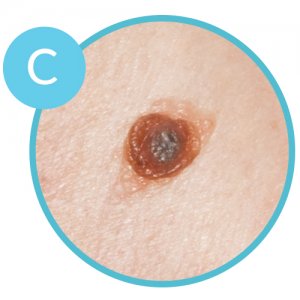
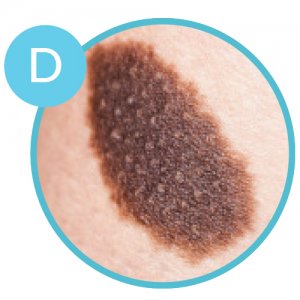
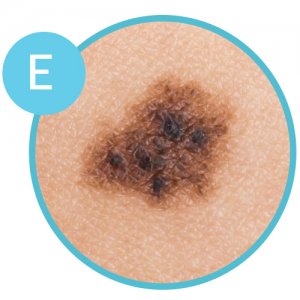
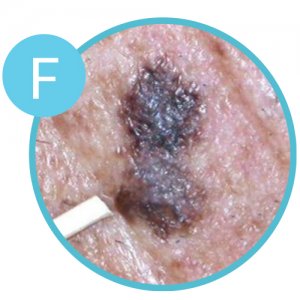 F – Funny Looking
F – Funny Looking